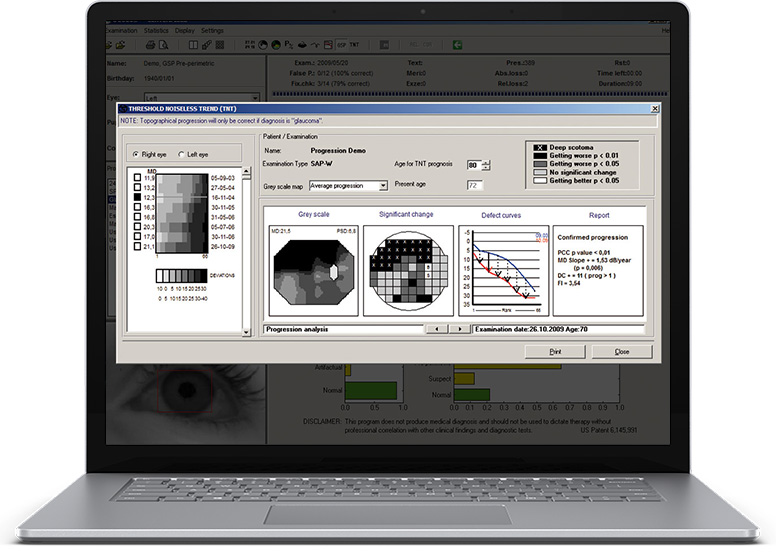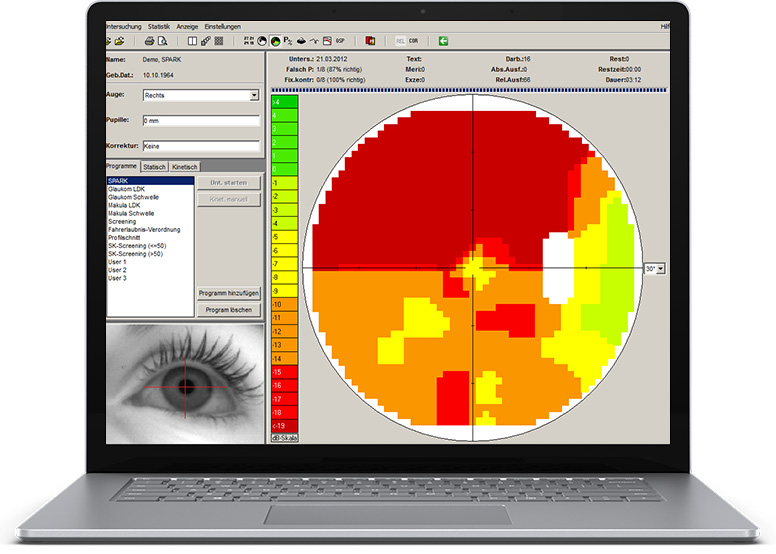Centerfield®2
OCULUS Centerfield® 2
Thanks to its ergonomic design, user-friendly program navigation and ease of operation, the Centerfield® 2 Perimeter has proven itself to be an invaluable instrument in the Occupational Health area. The unit performs static perimetry up to 70° eccentricity. It also meets the requirements of the German Ophthalmological Society’s (DOG) Road Traffic Commission for conducting visual field testing in accordance with the regulations for the issuance of driver’s licenses and the Guidelines G25 and G41 issued by the German Institute for Occupational Health and Safety.
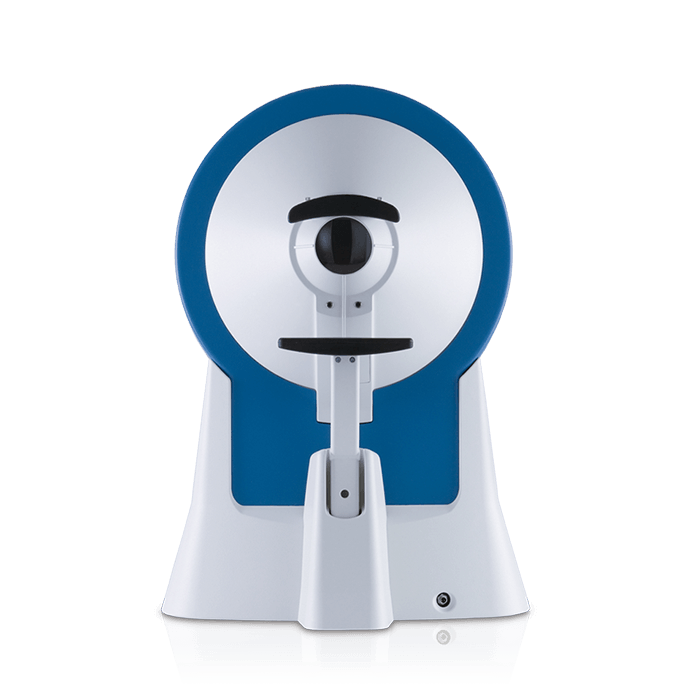
Functions
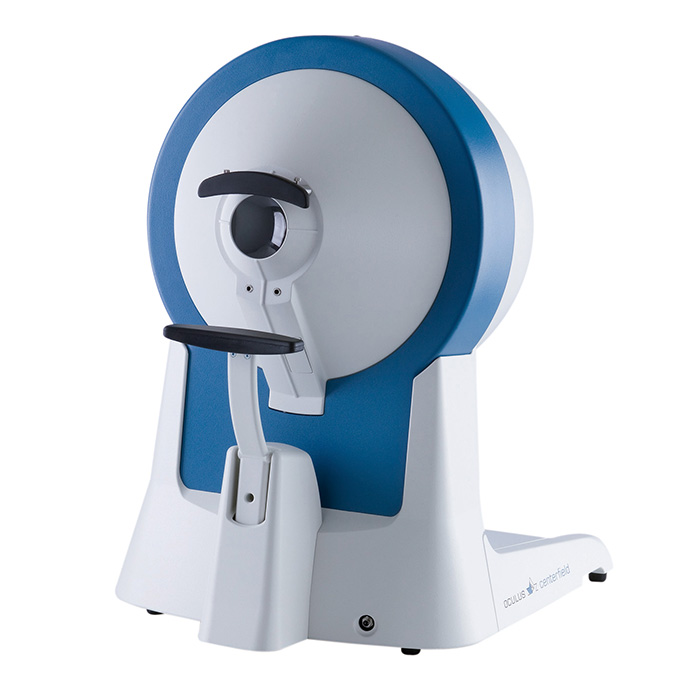
Ergonomic Design
The self-contained design and light-shielded viewer allow examinations to be conducted in normally lit rooms. Its robustness and light weight make the Centerfield® 2 perimeter the ideal unit for portable use, which is often a necessity in the Occupational Health area.

Easy Operation
The Easyfield® perimeter is operated via an external computer (notebook or PC). You can enjoy the full freedom of networking the examination data with the familiar user interface of the OCULUS programs. The use of translucent eye shields allows you to conduct measurements without the usual eye patch, thus saving you valuable time of preparing examinations.
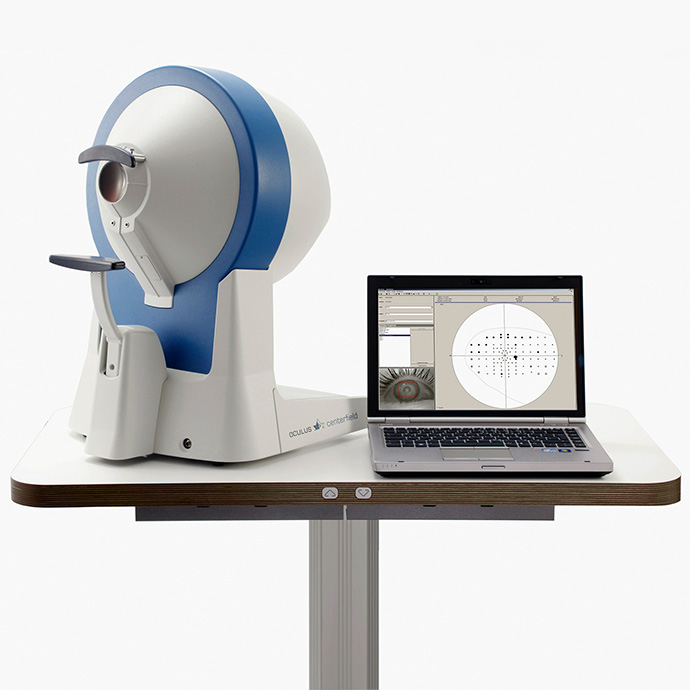
Modern Connectivity
The Centerfield® 2 perimeter can be operated via the USB port of a notebook or PC. Together with the supplied device software, this modern solution allows you to fully utilize all of the benefits of today’s IT systems, especially the network connectivity. This guarantees both safe storage of examination data and quick access to that data when needed.
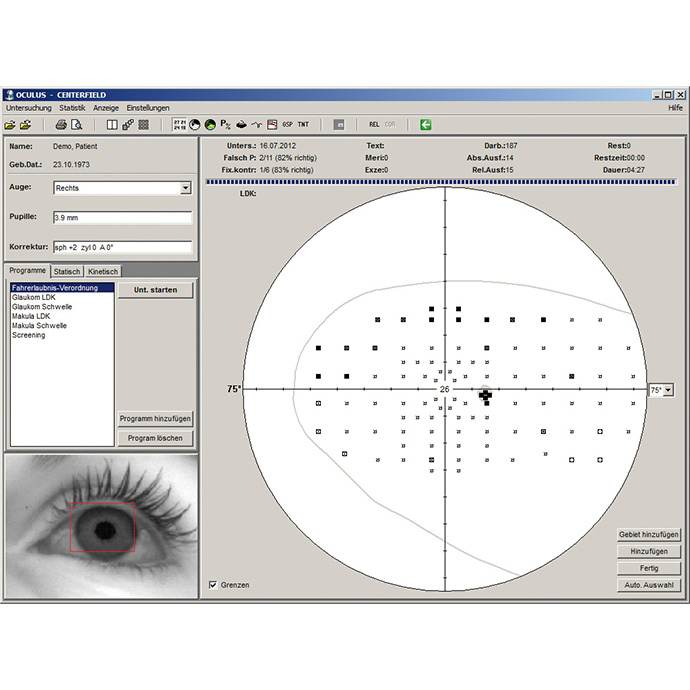
The Examination Programs
The recommended series of pre-defined test programs provided for Centerfield® 2 perimeter covers the examinations most frequently needed in practice. The “Driver’s License Regulations“ program permits occupational and company physicians to test the field of vision in accordance with applicable German regulations (FEV and amendments thereto) governing the issuance of driver’s licenses. The macula and glaucoma programs allow early detection of various retinal diseases.
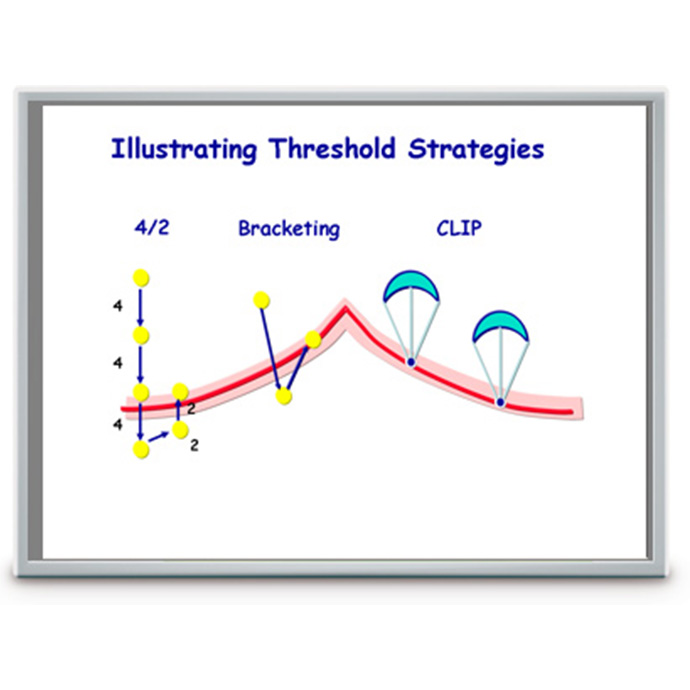
The OCULUS Test Strategies
Threshold related – suprathreshold strategies have proven to be time-saving and efficient examination methods. The Centerfield® 2 perimeter uses these strategies for all screening programs, including the Driver’s License eye exams. A variety of threshold testing strategies are available for measurement of the exact numeric values of the visual thresholds.
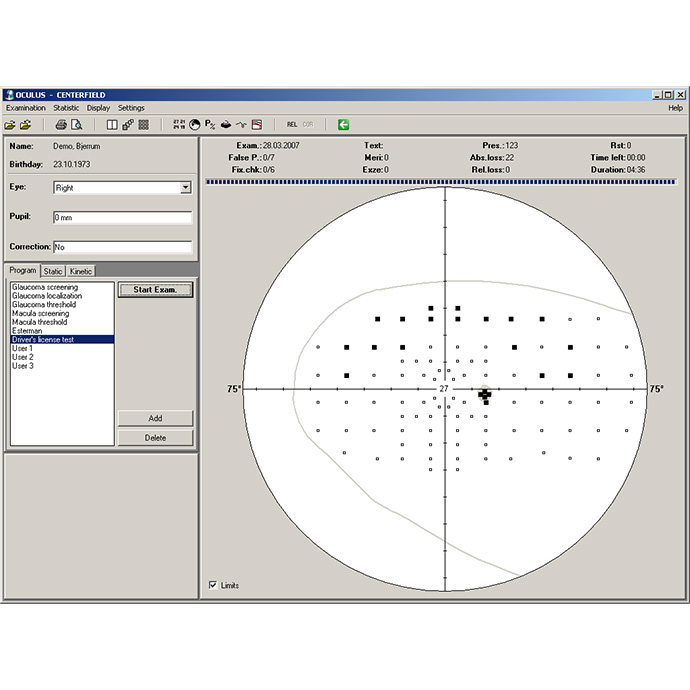
The OCULUS Test Point Grid
The patented projection method allows you to freely select test point grids on the Centerfield® 2. The central field of vision can be examined using functionally or orthogonally distributed test points. Grids such as the “FeV70” or “Esterman” are used for the periphery. This unlimited flexibility enables test grids to be modified if necessary.
| Model | Easyfield® | Smartfield | Centerfield® | Twinfield® |
| Maximum Eccentricity | 30° | 30°/25° With fixation shift: 60°/50° |
36° With fixation shift: 70° |
90° |
| Goldmann stimulus size | III | III | III | I, III & V |
| Static/Kinetic | Static | Static | Static/Kinetic | Static/Kinetic |
| Color perimetry | White-white | White-white | White-white Blue-yellow |
White-white Blue-yellow Red-white |
| Stimulus presentation | Light emitting diodes (LED) | LCD display | Back surface projection | Back surface projection |
All commercially available perimeters make use of the same basic testing principles. What makes one perimeter different to another is the way it performs fast thresholding test. Various fast threshold strategies are included in the OCULUS perimeters, one of which is the SPARK strategy – currently the fastest OCULUS strategy for glaucoma patients. It is the product of many years of research dedicated to obtaining reliable averaged results within the shortest possible time.
Furthermore all the perimeters include a unique glaucoma staging display called the Glaucoma Staging Program (GSP).
Lastly glaucoma progression is monitored by the Threshold Noiseless Trend (TNT) analysis method. The method can distinguish between diffuse or focal progression, and unlike methods based on event analysis, trend analyses make full use of the data pool of earlier examinations.
- Full Threshold (4-2 dB Staircase) Strategy – the algorithm of this strategy can easily be implemented in any instrument and therefore it is available on most commercial perimeters. Results obtained with this strategy can be compared to results from any other perimeter using the same strategy.
- OCULUS Fast Threshold Strategy – this strategy aims to reduce test time of the 4-2 dB Staircase strategy. The idea of the OCULUS Fast Threshold Strategy is to achieve a compensating gain in information by starting the measurement at each test point with a luminance value equal to the expected sensitivity value at that point. This expected value is calculated on the basis of measurement results already obtained at neighbouring test points.
- CLIP (Continuous Light Increment Perimetry) Strategy – locations are tested individually by increasing the luminance of the stimulus continuously until the patient responds.
- SPARK – the examination is performed in four phases. Each of these phases supplies a possible estimation of the functioning of the entire visual field, and the final result is obtained by averaging of the values obtained during each phase.
Yes. SPARK Precision is performed in four phases over a time period of three minutes. Each of the 66 points in the test pattern will be tested at least once during the three minutes.
Shorter examination time and better repeatability are the main benefits of SPARK. Testing time for this strategy will not exceed three minutes and this holds true even for patients with severely impaired visual field function. Compared to other known strategies, SPARK results have a much lower variability.
Various quick screening methods are available. Normally supra-threshold tests are used, however SPARK Quick has been designed specifically with screening in mind. The duration of the test is 1.5 minutes (90 seconds) on all patients and threshold values are generated after the examination.
Most perimeters only have Heijl-Krakau method to monitor patient fixation. This method uses the blind spot as reference. Glaucoma can cause absolute defects in the vicinity of the blind spot, which may increase as the disease progresses. Using the Heijl-Krakau method for these patients may be problematic. Central fixation control – only available in the OCULUS perimeters – uses the central luminance threshold as reference. This is a helpful method to control fixation for glaucoma patients.
All OCULUS perimeters allow for manual set-up of programs. When comparing current results from an OCULUS perimeter with previous results from other perimeters it is important to adapt the parameters of the current examination as closely as possible to those of the earlier examinations. This needs to be done in order to achieve the highest degree of comparability.
Examinations on the Easyfield®, Smartfield or Centerfield® can be performed in a normally lit room, provided the lighting is diffuse and there are no powerful light sources in the patient’s back. The Twinfield® requires a darkroom, as its perimetric hemisphere must be free of shadows.
GSP uses pattern recognition algorithms in order to assess the visual field results of the patient. For “Normal” and “Glaucomatous” visual fields a risk class can be determined by comparing the detected patterns to the visual field patterns stored in the database of the GSP. If the “Pre-perimetric” risk class dominates the bar chart, it means that the pattern of the measured visual field is similar predominantly to the patterns of patients with pre-perimetric glaucoma from the database. Pre-perimetric glaucoma is defined through glaucomatous changes to the optic nerve head and/or the retinal nerve fibre layer without detectable visual field losses. A “Pre-perimetric” result should be followed by a closer monitoring of the patient.
The software automatically chooses exams done with the same test pattern and the same strategy making comparison fast and easy to detect progression. Exams showing obvious learning effects are excluded by the software. The operator can also manually exclude exams if needed.
Technical Data
Specifications
| Programs | Pre-defined glaucoma, macula, neurological and screening tests; user-defined tests |
| Strategies | Threshold strategies: OCULUS Fast Threshold, Full Threshold (4-2), CLIP Optional: SPARK strategy Age-adapted supra-threshold screening (2-zone, 3-zone, quantify defects) |
| Test patterns | Orthogonal patterns (30-2, 24-2, 30 x 24, 10-2) Physiological patterns (Area 1-8), Esterman, Profile, customised patterns |
| Stimulus size | Goldmann III |
| Stimulus color | White / Blue |
| Stimulus duration | 200 ms / User-defined |
| Examination speed | Adaptive / Slow / Normal / Fast / User-defined |
| Stimulus luminance range | 0 – 318 cd/m² (0 – 1 000 asb) |
| Background luminance | 10 cd/m² (31.4 asb) |
| Background colors | White / Yellow |
| Maximum eccentricity | 36° / 70° (with fixation shift) |
| Fixation control | CMOS camera, through central threshold, Heijl-Krakau (over blind spot) |
| Reports | Glaucoma Staging Program (GSP), Progression report for Threshold Noiseless Trend (TNT) |
| Kinetic Perimetry | Strategies: Automated tests along meridians with freely selectable density up to 35° Stimulus speed: 2°/ s (Goldmann-Standard) or user-defined |
| Bowl radius | r = 11.8 in |
| Patient positioning | Depth-adjustable headrest, optional motorised chinrest |
| Weight | 25.8 lbs; chinrest: 2.4 lbs |
| Operating voltage | 100 – 240 V |
| Operating system | Windows® XP or above |
| Interface | USB |
| Included in delivery | Cover, Lens holder for trial lenses, Opaque occluder, Four trial lenses: ± 1.0 sph. and ± 3.0 sph. |


